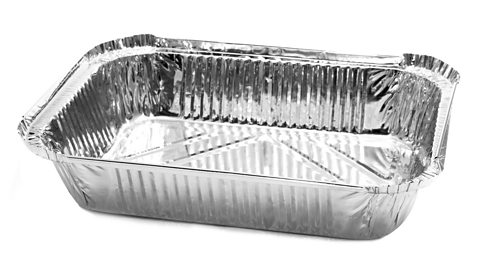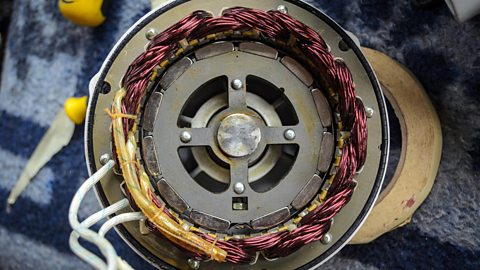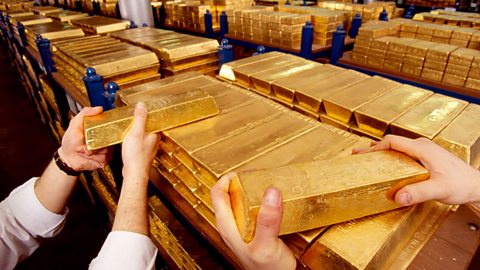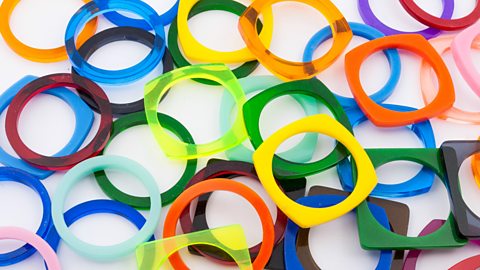Metals are a natural resource. They are mined out of the earth and processed to create materials with specific properties.
The wide range of metals and the complexity of parts and components they can be used to produce, make metals ideal materials for manufacturing.
But extracting metals and manufacturing with them can cause pollution and the energy needed contributes to carbon emissions and climate change.
Metals and alloys
There are a lot of different types of metal.
Pure metals only contain one type of metal. They are found in the ground in rocks. They are mined (dug out) and separated from other materials using chemicals or heating. They can then be shaped for use. These include metals such as:
- aluminium
- silver
- copper
- gold
- iron
- zinc
Alloy metals are non-natural metals that have been created by mixing pure metals together or with other materials. Examples of alloy metals are:
- brass - an alloy of copper and zinc
- steel - an alloy of iron and carbon (from coal)
- bronze - an alloy of copper and tin
Common metals and their properties
Aluminium


Aluminium is a pure metal which was first found and used in the 1800s.
It looks like silver and reflects light in the same way, but is much lighter, weaker and cheaper.
As it is a soft and flexible material which does not rust, it can be used to make a range of different things such as drinks cans, parts for vehicles and parts for buildings.

Copper

Copper is one of the few metals that can be used in its raw form.
It was the first metal to be castTo make a material into a new shape by melting it, pouring it into a mould and leaving it to turn solid. into a mould in around 4000 BC (around 6,000 years ago) and the first metal to be mixed with another metal to make an alloy metal. It was mixed with tin to make the alloy bronze in 3500 BC (around 5,500 years ago).
Copper is flexible and soft so has been used to make jewellery for a long time. It is also a good conductorA material which allows charge or heat to move easily through it. of heat and electricity so is now commonly used for wires in all kinds of machines and systems.

Gold

Gold is found in rocks as nuggets or grains. It is a soft and flexible material in its pure form and is treated or mixed with other metals to make strong and expensive alloy metals.
It is most commonly used to make jewellery and currency (money) because it is rare. This makes it valuable. You'll also find it in electronics used in laptops, mobile phones and even spacecrafts as well as in medical treatments.
(Did you know? Many people think that ÂŁ1 and ÂŁ2 coins are made out of gold, but they are actually made of nickel-brass!)

Iron

Iron is the most common material on Earth, making up most of the Earth’s inner and outer core.
It is a pure metal, mined and then heated to separate it from rock so that it can be used. Humans began to do this around 1,200 BC (around 3,200 years ago). This discovery ended the Bronze Age and led to the Iron Age. Iron was used at this time to make stronger weapons and tools.
Most iron mined now is used to make steel, a strong alloy metal.

Steel

Steel is an alloy metal made from iron and carbon.
It is a very strong, long-lasting material that is used to make a lot of different things, including parts for cars, cutlery like knives and forks, and girderA beam that helps to keep a structure standing. for buildings.

Zinc

Zinc is a pure metal that is brittle and weak. It is often used to galvanise metals like steel. This means the zinc is used as a coating that covers the steel and protects it from rusting and corroding.
Zinc is also used in batteries. It is mixed with other materials to make a paste that can generate electricity.

Environmental impact
Metals are a non-renewable material, which means that once they are used, they are gone and do not grow back.
The mining of metal can cause pollution to local wildlife and natural features such as rivers.
Making metal uses a lot of energy, which produces carbon dioxideA gas that is naturally present in the atmosphere and a greenhouse gas. Trees absorb carbon dioxide and humans breathe it out.. This contributes to climate changeThe change in the usual conditions of weather (temperature, wind, rainfall etc.) on Earth over a long period of time. The climate has changed throughout the history of Earth, but current climate-change refers to an increase in global temperature. which is a very serious problem. As it takes less energy to recycle metal than make new metal, it is very important to recycle metal when we are finished using it.
This includes items like phones, laptops and TVs which all have metal in them. They can be recycled at special recycling places. So when you’re looking to get a new device, look up the nearest place for you to recycle your old one.
Recycling metals
Recycling a metal involves collecting used metal items and producing new metal from them. The steps usually needed are:
- collecting and transporting the used items to a recycling centre2, breaking up and sorting the different metals
- removing impurities from the metals
The metals can then be used to manufacture new metal items.
Advantages of recycling metals
The advantages of recycling compared to producing metals from metal ore include:
- more economic - less energy is needed to produce a metal
- less damage to the environment - fewer quarries and mines, less noise and less heavy traffic
- saves valuable raw materials - reserves of metal ores will last longer
Disadvantages of recycling
Disadvantages of recycling arise from the recycling process itself:
- the collection and transport of used items needs organisation, workers, vehicles and fuel
- it can be difficult to sort different materials from one another
Recycling electronics
Around the world the average lifespan of a smartphone is less than three years.
It is often easier to buy a new phone, tablet or other electronic device and discard the old one than to maintain or upgrade an old device. If the item isn't recycled or resold, it will end up in a landfill site.
Sometimes electrical items are sent to countries which have less strict laws about recycling. For example, in Ghana there have been reports of highly-toxic dumping grounds for old technology.
Recycling our technology can reduce the pollution it causes. It is an important way to reclaim rare metals and reduce the impact of extracting new metals.
Advantages and disadvantages of metals
Advantages of metals
There are many different types of metal that have different properties. This means metals can be used for lots of different things.
Metal is stronger than other materials such as plastic, which means it can be used in buildings and other large structures.
Metals can withstand higher temperatures than other materials, which means they can be useful in lots of different situations.
Metal can be recycled, which means less metal needs to be mined in the future. Even items made from metal such as batteries, laptops and mobile phones can also be recycled.
Disadvantages of metals
Mining metal has a negative impact on the local environment, causing pollution, harming plants, animals and even people.
Making metal takes a lot of energy and produces loads of carbon dioxide. This contributes to global warming and climate change.
Metal is non-renewable and there is a limited supply, which means it is very important to recycle the metal that we use.
More on Materials and resources
Find out more by working through a topic
- count2 of 2
